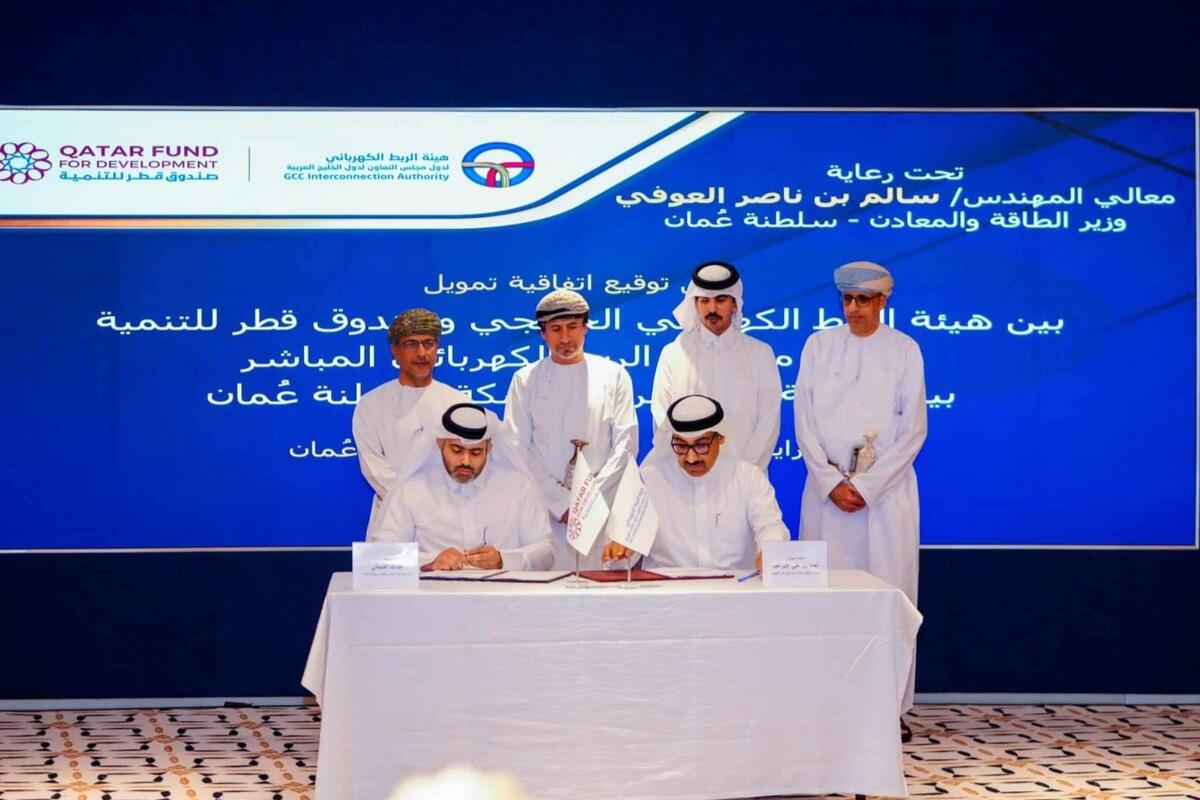The Gulf Cooperation Council Interconnection Authority (GCCIA) and Qatar Fund For Development (QFFD) have formalized a $100 million agreement aimed at advancing the construction of a direct grid connection that will link the GCCIA network with Oman. This initiative, QNA reported, is a crucial step toward enhancing Gulf Cooperation Council energy integration. Moreover, the undertaking, projected to exceed $700 million in total costs, is set to improve energy integration among GCC nations and Oman, thereby driving more resilient and sustainable regional electricity systems. The signing ceremony took place in Muscat, under the esteemed patronage of Eng. Salim Nassir Al Aufi, Oman’s minister of Energy and Minerals. Key figures in this partnership, Eng. Ahmed Ali Al-Ebrahim, CEO of GCCIA, and Fahad Hamad Al Sulaiti, director general of QFFD, were instrumental in formalizing this agreement.
Read more: Qatar-Oman trade volume surpasses $1.8 billion in 2024, says minister
Infrastructure developments and technical aspects
This project will entail the creation of two 400 kV overhead transmission lines that will span 530 kilometers, effectively connecting the GCCIA’s Al Sila station in the UAE to the newly built Ibri station in Oman. Additionally, two 400 kV substations will be established—one in Ibri and another in Al Baynunah—equipped with state-of-the-art control, protection, and communication systems designed to enhance operational efficiency and safety.
Enhancing grid stability and capacity
Moreover, a dynamic compensator station will be introduced to pormote grid stability, augment transmission capacity, and ensure a reliable power supply. The project’s overall transmission capacity is projected at 1,700 MW, with a net transfer capacity of 1,200 MW, reflecting a significant advancement in Gulf Cooperation Council energy integration.
Economic and environmental benefits
This interconnection initiative is poised to deliver substantial benefits to both Oman and the GCC nations. The enhanced power exchange will streamline the transfer of electricity, minimizing the necessity for new power plants and optimizing existing generation capacity.
In addition, the integration presents economic advantages, including reduced operational costs for the participating countries, which could lead to considerable annual savings. Furthermore, the project aligns with global sustainability goals by lowering carbon emissions and reinforcing environmental conservation efforts within the region. This strategic initiative aspires to create a more flexible, resilient, and sustainable energy infrastructure for the Gulf region, with far-reaching implications for the future of energy systems.








